All about screws
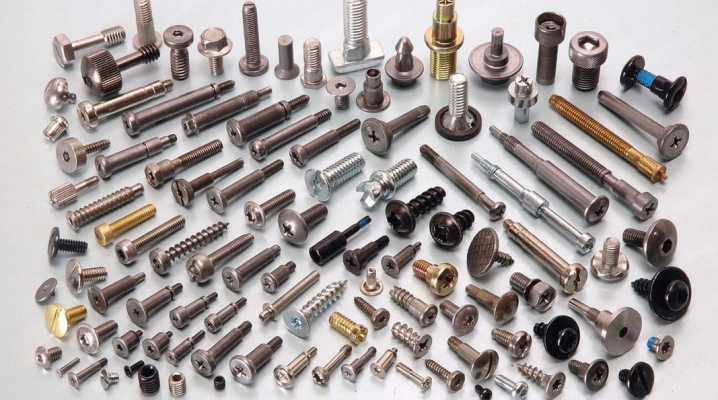
Choosing the right screws for a particular type of job is not an easy task. Which one is suitable for a doorknob and which one is suitable for formwork? It is necessary to take into account the purpose of the screw, its strength class, material of manufacture and much more.
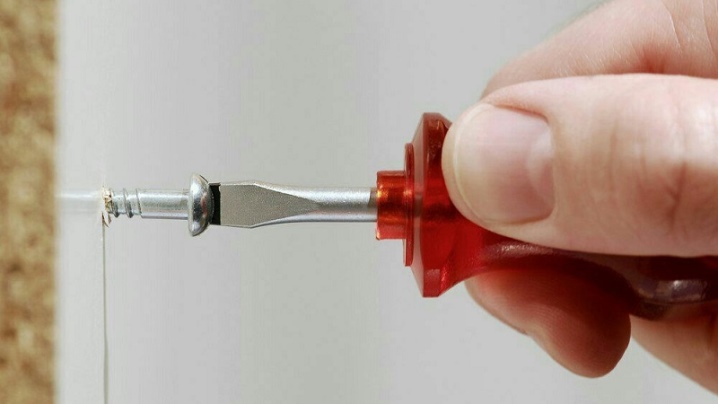
What it is?
A screw is a product for fastening parts. One of the parts can be threaded from the inside. The appearance of the screw is a rod with a thread applied to it from the outside on one side and a structural element in order to transmit torque on the other. The latter can be in the form of a head or simply made as a slot in the end part of the screw body (there are some other forms).
The difference between a screw and a screw is that the screw does not have a tapered downward taper, and the screw does not cut the material during the screwing process. The purpose of the screw is threaded connection or fixation. In addition, it can be used as an axis and hold rotating parts, a guide for rotation or straight movement, etc.
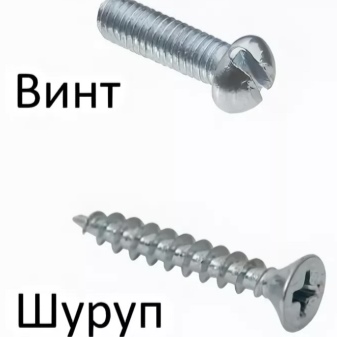
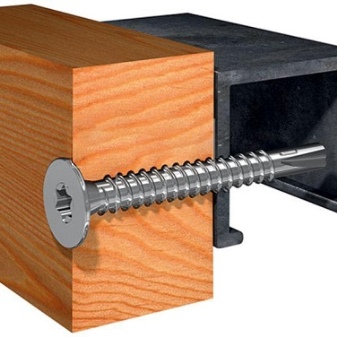
History of origin
The ancient Greeks knew about the screw mechanism, however, then it was called the Archimedean screw. Later, such a mechanism was described by the Greek mathematician Archytas of Tarentum. Wooden screw gear has become widespread in the Mediterranean, it was used in presses for squeezing oil and making wine. This happened before our era, in the 1st century. Medieval Europe, which is strange, did not use metal screws and, most likely, did not know anything about them.
A manual screwdriver appeared around 1570-80 as a tool for tightening screws, but was not in demand. Screwdrivers began to be widely used only in 1800-10. The screw was originally a type of fastener for construction, its use was limited to carpentry and blacksmith crafts.
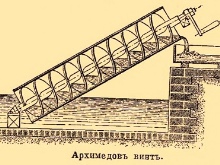
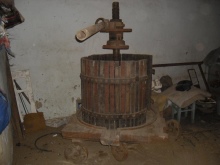
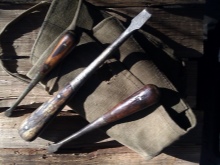
The metal screw became a widely used element when machines for large-scale on-line fabrication appeared. It happened in the second half of the 18th century.
Machines developed in two directions: screws for wood were manufactured industrially on a unit designed exclusively for this, or the necessary screws were stamped in small batches on a semi-automatic machine, on which it was possible to change the equipment.

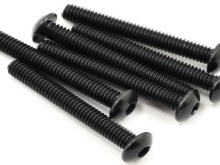

What are they?
One of the main differences between screws is the shape of the head. The slot for a standard screwdriver is used only in those fasteners where there is no load on the connections. But it will be difficult to forcefully tighten and lock the connections. The main types of screws for a screwdriver are those with a cylindrical or cylindrical spherical, hemispherical, conical, cylindrical-conical, sphero-conical head.
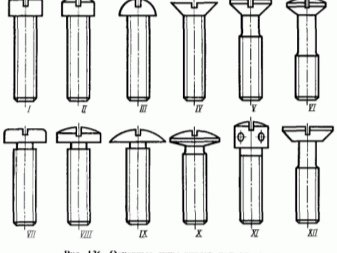
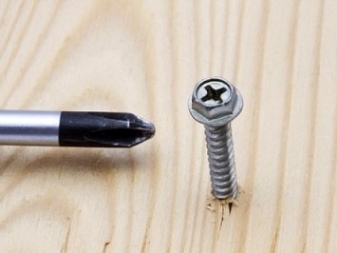
To avoid the protrusion of the head, use secret or semi-secret models of hardware. Such models are, unfortunately, the most problematic relative to other species. They have a poor combination of thread and tapered head surface. This is especially evident in connections where more than two screws are used. Elimination of this drawback is possible only partially - through the use of fit and clearance.
In addition, there is such a disadvantage as difficult stopping.

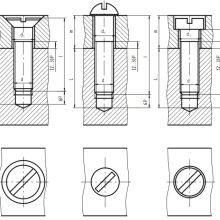
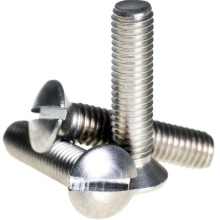
The most reliable methods can be called rolling and punching, but they are used only on ductile metals and on non-separable joints. And one more disadvantage of this type of screws is the low strength of the slots for the screwdriver.But this minus is inherent not only in secret or semi-secret types, but also in those that have a hemispherical or cylindrical head.
The screw anchor is intended for fastening massive equipment to the ground. It is made from screw profiles. The anchoring product is fixed due to the hardening of ampoules, in which there are quick-setting compounds - mineral or polyester. They are placed in the hole when the anchor is being installed.
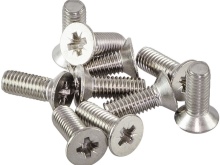
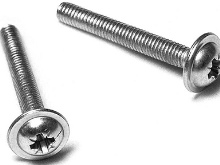
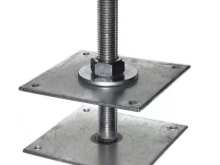
The installation is carried out by combining it with various kinds of tightening - by means of a lattice or a metal mesh. The anchor can be up to 30 cm long. The captive screw is used in electronic products. Its peculiarity is that the diameter of its thread is larger than the diameter of the rod. The head of the product can be any. O-ring screws are made of galvanized steel.
Instead of a head, it has a ring or a hook. It is used to work with suspensions in domestic conditions and is very widely used on construction sites. Pressure screws are in demand in shipbuilding, mechanical engineering, and the manufacture of household appliances. They can be with or without a screwdriver slot.
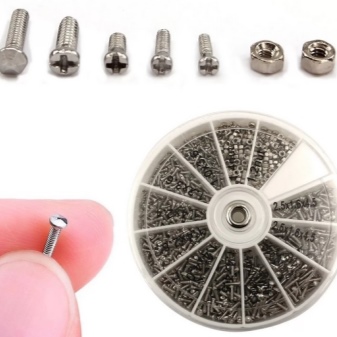

By appointment
Depending on the purpose, the screws are divided into two groups: fixing and installation screws. The former are needed for detachable fasteners, the latter - in order for the fixation of the parts to be static and mutual relative to each other. Fasteners are the most common type. It is these screws that play a leading role in a detachable screw connection and look like a rod, on one side of which the head is located, on the other - the thread.
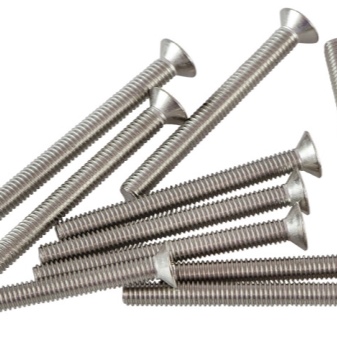
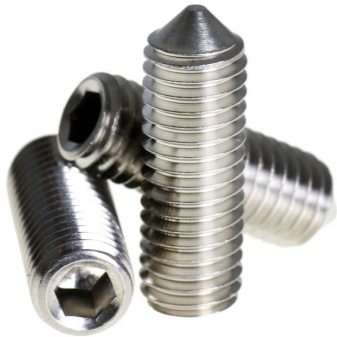
The role of the head is to reliably press the parts that are connected to each other. In addition, it is by the head that the screw can be gripped with a screwdriver, wrench, hexagon or other tool. The head shape of the fastening screw can be round, with 6 edges, square and other. The term "lock" denotes one of the types of head, in which it is extremely difficult to unscrew the fasteners accidentally or deliberately. For example, it can be a head with a hole (or there are two of them).
Only one type of key is suitable for the "secret", and if you do not know which one, you will not be able to unscrew such a fastener, that is, it can be called anti-vandal.
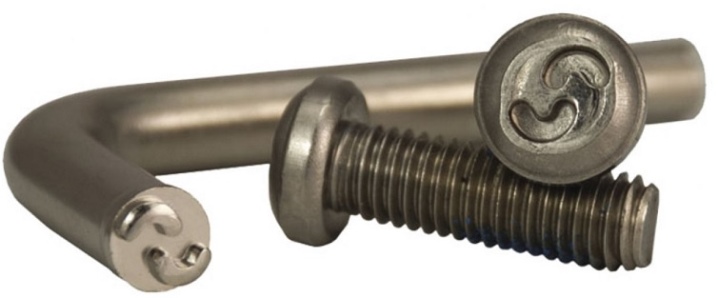
If the fastening is made with a screw and a nut, it is called a bolt, but a screw is called a bolt. The bolt's head has six faces, it is tightened with a wrench. When you need to fasten parts with an imperfectly flat surface, where you plan to screw the screw, a tide is made, or the surface is processed in such a way as to give it a plane. If this is not done, the fastening will not be strong, and a snug fit will not be achieved. The connection will be skewed, which will create unnecessary stress on all elements, and as a result, the screw will be destroyed.
Even soft materials can be connected with the screw connection, but a strong bushing is required at each connection point.
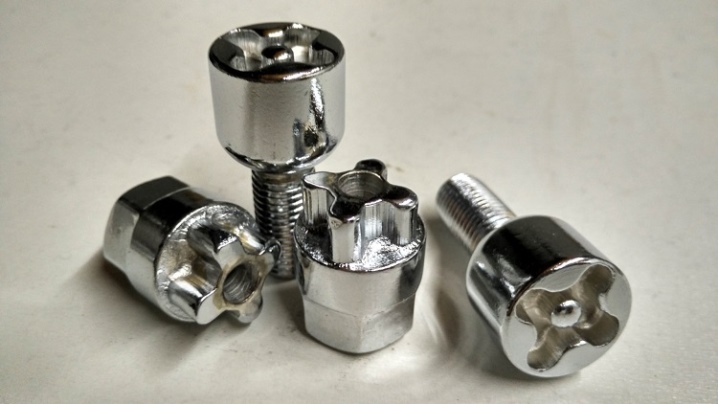
As for the set screws, they have a protrusion or recess on one side to make the fixation stronger and more tight. Sometimes it is even necessary to make special holes in order for the connection to be reliable. Set screws can be tapered, flat, cylindrical, drilled, stepped ends.

The latter are either with a sphere or conical. All of the above refers to GOST 12414-94. If we talk about other standards, there are also grooved, ball ends, as well as slotted screws on each side (completely symmetrical). The latter are widely used in assembly using automatic machines.

The adjusting screw is a US invention. Today it is used very widely and in many industries. A typical representative of this type consists of a skillfully machined cylinder with different ends: one has a smaller diameter, its diffuser is recessed, and the thread has a smaller pitch.With this product, you can literally adjust "on the knee". Thanks to the enlarged end face, a variety of tools can be used to position the screw in the "run" position.
Such a screw, for example, is used to check the strength of the installation of parts in various finishing construction works, whether it is the setting of window frames, doors or wooden supports.
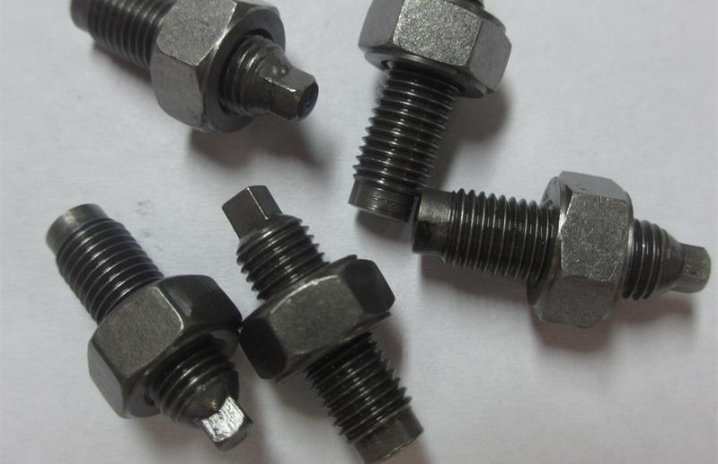
By the shape of the head
Cap screws vary according to their shape. She may be:
- flat;
- knurled - this head does not have a slot, such screws are intended for manual screwing;
- convex;
- round - such decorative products are used to give an attractive appearance;
- mushroom (in the form of a hemisphere) - the head is located low and fits snugly to the part with which it is fastened;
- countersunk - this type of head has the shape of a cone, while the outer surface is flat, designed to drown the fasteners in the material;
- semi-hidden - this shape looks like a secret, but the outer surface is not flat, but rounded.

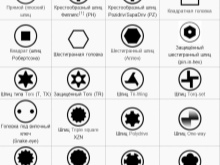

By the type of slot
The slot on the screw head has one function - it provides reliable contact with one of the types of screwdriver or wrench to screw or unscrew the product. In this regard, the dimensions of the slot can only be standard (as well as the sizes of screwdrivers and keys). The slot must be strong, maintain its shape for a long time, not "break off" when unscrewing or tightening the screw.

The main types of threaded fasteners are bolt, nut, screw, screw, self-tapping screw. They differ in both the type and shape of the thread, and the type of heads and splines.
- The bolt has a traditionally 6-sided head (turnkey).
- The screw or screw can have a single slot (you need to work with this with a flat screwdriver) or in the form of a cross (then you need a Phillips screwdriver).
- Self-tapping screws are usually screwed into a material with high resistance, therefore, a cross-shaped slot of the PH type or a cross-shaped one, which has additional angular "rays", is needed.
- A screw or wood screw can also have a hex head both external and internal.
- The slot can have a different, more complex shape - an asterisk (and the number of faces is different - 8 or 12), an oblique triangle, a square or a socket (for a fork key), as well as other shapes.
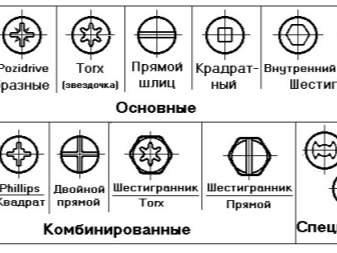
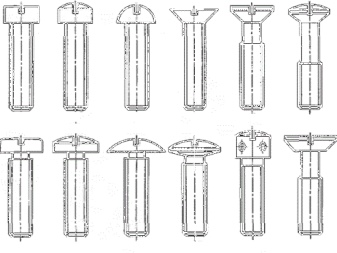
Materials (edit)
In accordance with the requirements of DSTU ISO 898-1: 2003, the screws are made of carbon steel. It can be doped or hardened carbon steel, as well as alloy steel. Carbon steel is an alloy of carbon and iron. Such steel can be low carbon, medium carbon and high carbon.
Alloy steel is called carbon steel with additional elements in the composition (alloying additives). Alloyed steels, in turn, can be low-alloy, medium-alloy and high-alloy. And also the screws can be made of corrosion-resistant (i.e. stainless) steel.

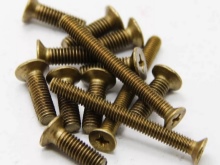
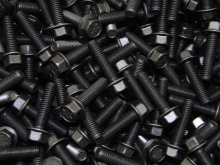
The most common fasteners are made of austenitic steel, the main constituents of which are chromium and nickel. If fasteners are needed where there is strong friction, high thermal conductivity, electrical conductivity and, at the same time, low weight of the product are needed, screws from non-ferrous metal alloys are suitable. These are brass and bronze fasteners in the first place.
Brass is called a zinc-copper alloy, and bronze is an alloy of copper and tin. Brass for the production of screws is not taken any, but anti-magnetic. And also use copper and aluminum alloys. There are also plastic products, but their strength is low, they are used, for example, in children's toys.
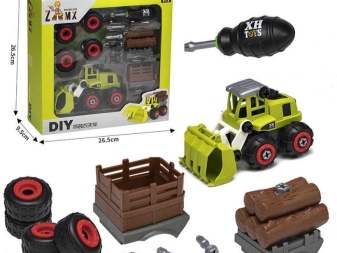

Dimensions and weight
When determining the size of the hardware, it is important to know exactly what diameter the rod has (it is traditionally denoted by the letter d), as well as the length of the product. The name contains information about what type of head, and according to what standard it is fastened with this hardware. A screw with a metric thread is designated in the documents using the formula MDxPxL. In this case, M is the sign of the thread, d, as already mentioned, is the diameter (it is measured and indicated in mm), P is the designation of the thread pitch (also in mm), and L is the length of the product (it is also measured in millimeters). The thread is in most cases inch, that is, it is measured in inches.
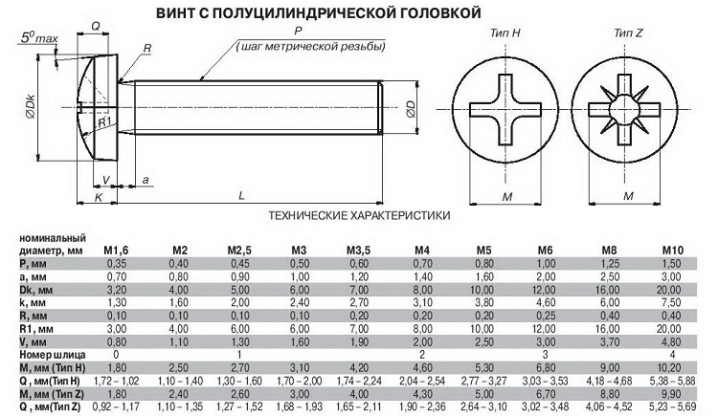
Besides the standard screws, there are also mini screws. For example, they are widely used in orthodontics. They are made of titanium alloy, they are self-cutting and self-drilling, but have a blunt cone, which avoids injury to the gums during their installation. And also mini screws are used in accessories such as glasses. And there are also maxi-screws, for example, tie-down for formwork, the length of which reaches 3 m.
The weight of screws is directly related to their dimensions and the material from which they are made. The lighter the material and the smaller the size, the less and the weight.
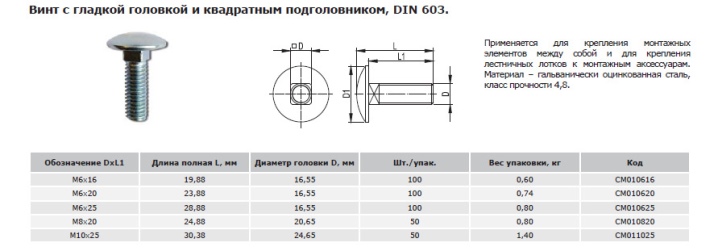
Manufacturers
Domestic screw manufacturers have received good reviews from consumers, for example, "Perm Krepezh" or "The First Fastener Factory"... The market for hardware products is extensive, there are many manufacturers in the country, the pricing policy is moderate (especially in comparison with prices for products of foreign firms).
Therefore, in most cases, the Russian consumer chooses Russian screws.
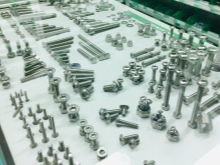

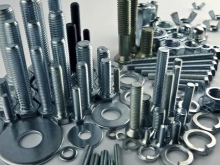
Selection Tips
For the correct choice of fasteners, you need to know exactly what it is being purchased for (for assembling equipment, for replacing worn out or otherwise unusable analogs). Besides, operating conditions play an important role - it will be installed indoors or outdoors, whether it will be affected by static and dynamic loads, reliability, strength, security of the fastening unit.
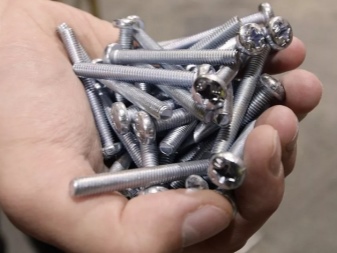
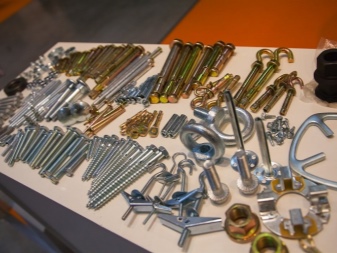
If you need reinforced fastening, or if you need to install the screw in a place with difficult access or constant dynamic loads, a hex screw will do. If it is necessary to fasten thin sheets and a metal frame, screws with a press washer and a semicircular head are used. Such products do not deform thin metal at the bonding points, while the area of the contact surface of the sheet and fasteners increases.
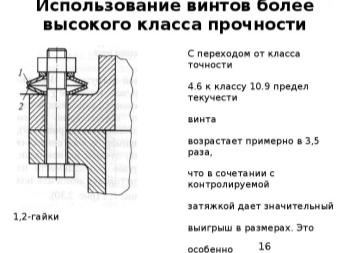
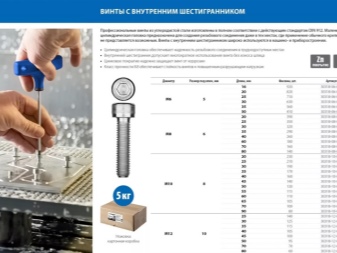
A tie screw (another name for furniture) is used when you need to assemble cabinet furniture, chipboard structures, as well as plywood and wooden structures. The screed is a durable and reliable product. To secure it, you will need to use a hex wrench. Before installing the clamping screw, you must prepare the hole and seat for the countersunk head of the fixing device.
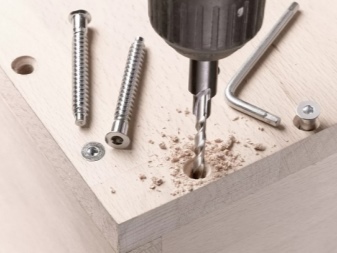
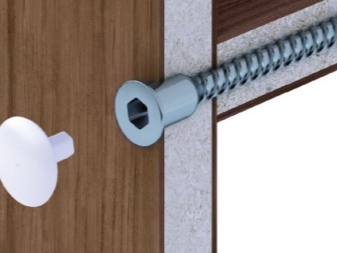
A semi-cylindrical screw head is needed when it is necessary to hang and fix sheet metal on a metal structure. This product looks very aesthetically pleasing. A countersunk head is required to securely connect the thickened sheet material to the metal frame. Before installation, it is necessary to prepare a hole in the sheet and remove the chamfer so that the planes of the sheet and the end part of the countersunk head are at the same level.
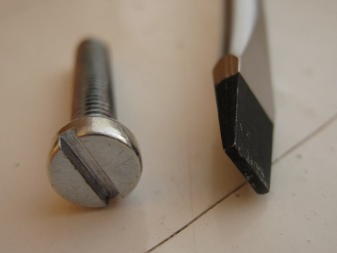
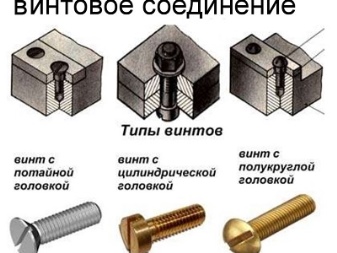
This design looks aesthetically pleasing, but does not withstand dynamic loads.
If you just need to attach one to the other, and the structure will not be subjected to any loads either in statics or in dynamics, and, in addition, aesthetics are also unimportant, a regular pan-head screw with a flat slot will do.
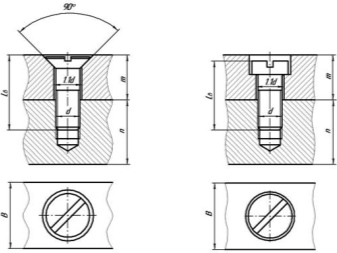
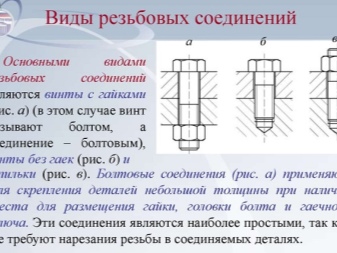













The comment was sent successfully.